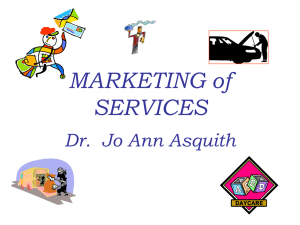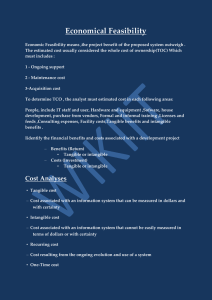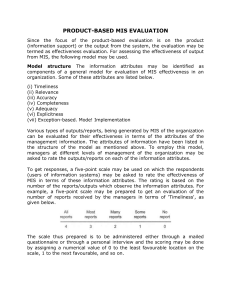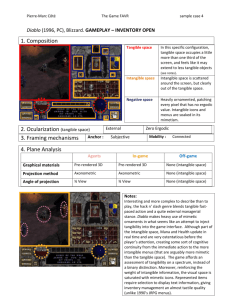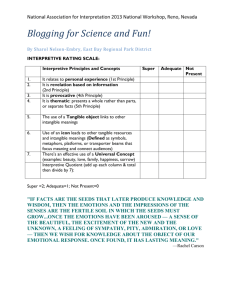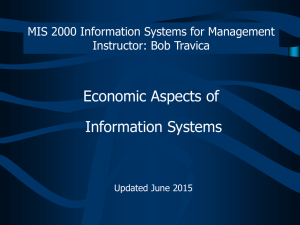10.cost n benefit - CSE Notes and Papers
advertisement
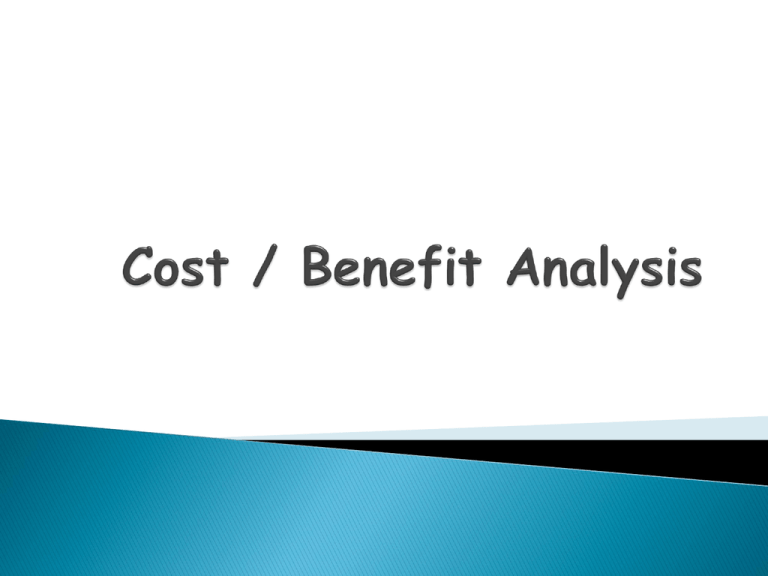
Developing an IT application is an investment. Since after developing that application it provides the organization with profits. Profits can be: ◦ Monetary ◦ In the form of an improved working environment. However, it carries risks, because in some cases an estimate can be wrong. And the project might not actually turn out to be beneficial. Cost Benefit Analysis helps to give management a picture of the costs, benefits and risks. It usually involves comparing alternate investments. Cost benefit determines the benefits and savings that are expected from the system and compares them with the expected costs. The cost of an information system involves: ◦ Development Cost ◦ Maintenance Cost. The development costs are one time investment whereas maintenance costs are recurring. The development cost is basically the costs incurred during the various stages of the system development. In performing Cost Benefit Analysis (CBA) it is important to identify cost and benefit factors. Cost and benefits can be categorized into the following categories. Hardware/software costs: It includes the cost of purchasing or leasing of computers and it's peripherals. Software costs involves required software costs. Personnel costs: It is the money, spent on the people involved in the development of the system. These expenditures include salaries, other benefits such as health insurance, conveyance allowance, etc. Facility costs: Expenses incurred during the preparation of the physical site where the system will be operational. These can be wiring, flooring,lighting, and air conditioning. Operating costs: Operating costs are the expenses required for the day to day running of the system. This includes the maintenance of the system. That can be in the form of maintaining the hardware or application programs or money paid to professionals responsible for running or maintaining the system. Supply costs: These are variable costs that vary proportionately with the amount of use of paper, ribbons, disks, and the like. These should be estimated and included in the overall cost of the system. We can define benefit as Profit or Benefit = Income - Costs Benefits can be accrued by : - Increasing income, or - Decreasing costs, or - both The system will provide some benefits also. Benefits can be tangible or intangible, direct or indirect. In cost benefit analysis, the first task is to identify each benefit and assign a monetary value to it. The two main benefits are improved performance and minimized processing costs. Tangible or Intangible Costs and Benefits Direct or Indirect Costs and Benefits Fixed or Variable Costs and Benefits Tangible cost and benefits can be measured. Hardware costs, salaries for professionals, software cost are all tangible costs. They are identified and measured.. The purchase of hardware or software, personnel training, and employee salaries are example of tangible costs. Costs whose value cannot be measured are referred as intangible costs. The cost of breakdown of an online system during banking hours will cause the bank lose deposits. Benefits are also tangible or intangible. For example, more customer satisfaction, improved company status, etc are all intangible benefits. Whereas improved response time, producing error free output such as producing reports are all tangible benefits. Both tangible and intangible costs and benefits should be considered in the evaluation process. From the cost accounting point of view, the costs are treated as either direct or indirect. Direct costs are having rupee value associated with it. Direct benefits are also attributable to a given project. For example, if the proposed system that can handle more transactions say 25% more than the present system then it is direct benefit. Indirect costs result from the operations that are not directly associated with the system. Insurance, maintenance, heat, light, air conditioning are all indirect costs. Some costs and benefits are fixed. Fixed Costs don't change. Depreciation of hardware, Insurance, etc are all fixed costs. Variable costs are incurred on regular basis. Recurring period may be weekly or monthly depending upon the system. They are proportional to the work volume and continue as long as system is in operation. Fixed benefits don't change. Variable benefits are realized on a regular basis. Cost for the proposed system ( figures in US Dollars) Benefit for the propose system Profit = Benefits - Costs = 300, 000 -154, 000 = USD 146, 000 Present value Analysis Payback Analysis Net Present Value Net Benefit Analysis Cash-Flow analysis Break-Even Analysis It is used for long-term projects where it is difficult to compare present costs with future benefits. In this method cost and benefit are calculated in term of today's value of investment. To compute the present value, we take the following formula Where, PV= F__ (1+i)^n i is the rate of interest & n is the time Example: Present value of $3000 invested at 15% interest at the end of 5th year is calculates as P = 3000/(1 + .15)5 = 1491.53 The net present value is equal to benefits minus costs. It is expressed as a percentage of the investment. Net Present Value= Benefits -Costs % = Net Present Value/Investments Example: Suppose total investment is $50000 and benefits are $80000 Then Net Present Value = $(80000 - 50000) = $30000 % = 30000/80000 =.375 Once we have determined what is estimated cost and benefit of the system it is also essential to know in what time will the benefits are realized. For that break-even analysis is done. Break -even is the point where the cost of the proposed system and that of the current one are equal. Break-even method compares the costs of the current and candidate systems. In developing any candidate system, initially the costs exceed those of the current system. This is an investment period. When both costs are equal, it is break-even. Beyond that point, the candidate system provides greater benefit than the old one. This is return period. Some projects, such as those carried out by computer and word processors services, produce revenues from an investment in computer systems. Cash-flow analysis keeps track of accumulated costs and revenues on a regular basis.


